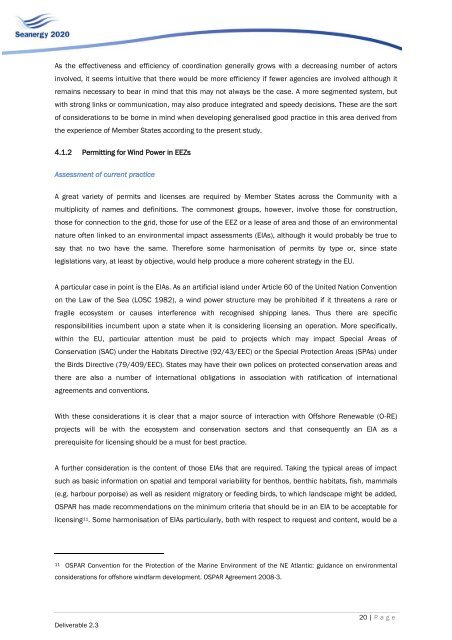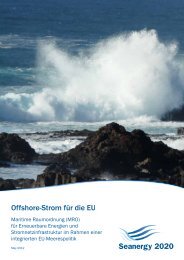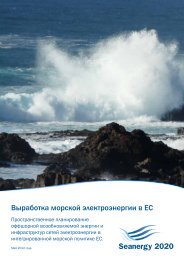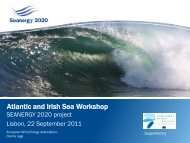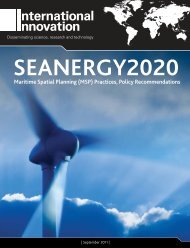Comparative analysis of Maritime Spatial Planning ... - Seanergy 2020
Comparative analysis of Maritime Spatial Planning ... - Seanergy 2020
Comparative analysis of Maritime Spatial Planning ... - Seanergy 2020
Create successful ePaper yourself
Turn your PDF publications into a flip-book with our unique Google optimized e-Paper software.
As the effectiveness and efficiency <strong>of</strong> coordination generally grows with a decreasing number <strong>of</strong> actorsinvolved, it seems intuitive that there would be more efficiency if fewer agencies are involved although itremains necessary to bear in mind that this may not always be the case. A more segmented system, butwith strong links or communication, may also produce integrated and speedy decisions. These are the sort<strong>of</strong> considerations to be borne in mind when developing generalised good practice in this area derived fromthe experience <strong>of</strong> Member States according to the present study.4.1.2 Permitting for Wind Power in EEZsAssessment <strong>of</strong> current practiceA great variety <strong>of</strong> permits and licenses are required by Member States across the Community with amultiplicity <strong>of</strong> names and definitions. The commonest groups, however, involve those for construction,those for connection to the grid, those for use <strong>of</strong> the EEZ or a lease <strong>of</strong> area and those <strong>of</strong> an environmentalnature <strong>of</strong>ten linked to an environmental impact assessments (EIAs), although it would probably be true tosay that no two have the same. Therefore some harmonisation <strong>of</strong> permits by type or, since statelegislations vary, at least by objective, would help produce a more coherent strategy in the EU.A particular case in point is the EIAs. As an artificial island under Article 60 <strong>of</strong> the United Nation Conventionon the Law <strong>of</strong> the Sea (LOSC 1982), a wind power structure may be prohibited if it threatens a rare orfragile ecosystem or causes interference with recognised shipping lanes. Thus there are specificresponsibilities incumbent upon a state when it is considering licensing an operation. More specifically,within the EU, particular attention must be paid to projects which may impact Special Areas <strong>of</strong>Conservation (SAC) under the Habitats Directive (92/43/EEC) or the Special Protection Areas (SPAs) underthe Birds Directive (79/409/EEC). States may have their own polices on protected conservation areas andthere are also a number <strong>of</strong> international obligations in association with ratification <strong>of</strong> internationalagreements and conventions.With these considerations it is clear that a major source <strong>of</strong> interaction with Offshore Renewable (O-RE)projects will be with the ecosystem and conservation sectors and that consequently an EIA as aprerequisite for licensing should be a must for best practice.A further consideration is the content <strong>of</strong> those EIAs that are required. Taking the typical areas <strong>of</strong> impactsuch as basic information on spatial and temporal variability for benthos, benthic habitats, fish, mammals(e.g. harbour porpoise) as well as resident migratory or feeding birds, to which landscape might be added,OSPAR has made recommendations on the minimum criteria that should be in an EIA to be acceptable forlicensing 11 . Some harmonisation <strong>of</strong> EIAs particularly, both with respect to request and content, would be a11 OSPAR Convention for the Protection <strong>of</strong> the Marine Environment <strong>of</strong> the NE Atlantic: guidance on environmentalconsiderations for <strong>of</strong>fshore windfarm development. OSPAR Agreement 2008-3.Deliverable 2.320 | P a g e


